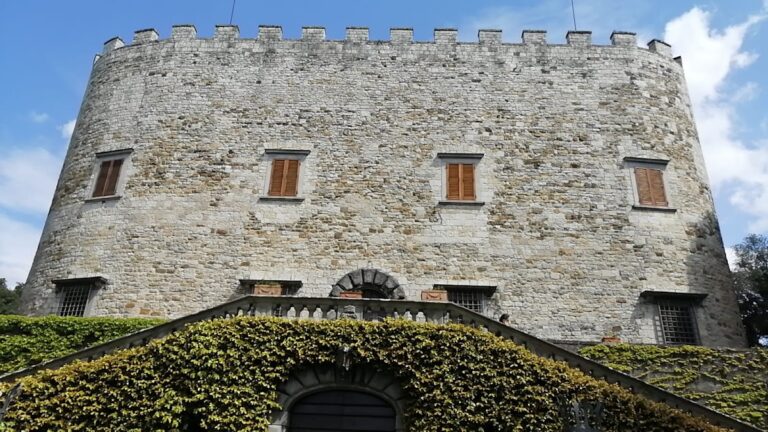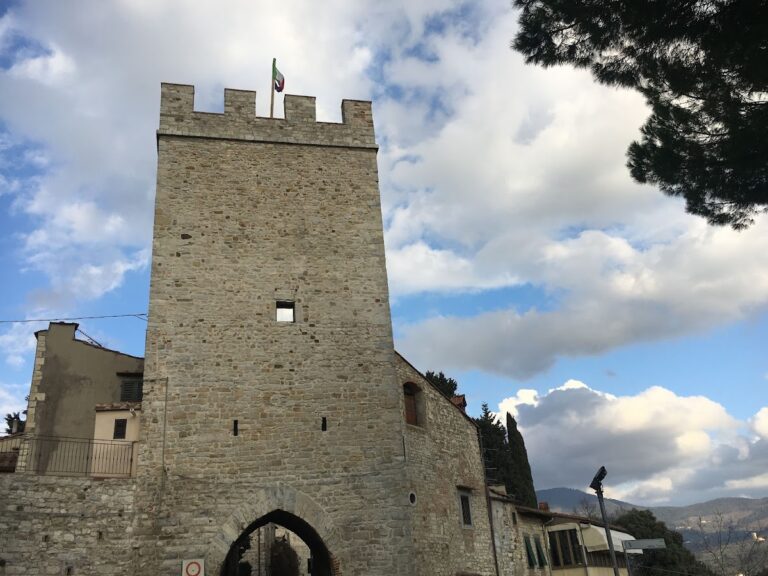Rocca Nuova: A 14th-Century Fortress in Serravalle Pistoiese, Italy
Visitor Information
Google Rating: 4.5
Popularity: Low
Google Maps: View on Google Maps
Country: Italy
Civilization: Medieval European
Remains: Military
History
Rocca Nuova is a fortress situated in Serravalle Pistoiese, Italy, constructed by the forces of the Republic of Lucca in the early 14th century. Its origins are rooted in the territorial conflicts of medieval Tuscany, notably among the city-states of Lucca, Florence, and Pistoia.
The castle’s story begins during a period of military strife in the early 1300s, when Lucca allied with Florence to challenge Pistoia’s control over Serravalle Pistoiese. After a prolonged siege lasting approximately three months, involving around 300 defenders and equipped with trebuchets and palisades, Pistoian forces eventually surrendered. This military action ended with Lucca seizing the fortress from Pistoia and thus establishing their dominance over the area.
Following the conquest, the new rulers feared possible uprisings from the local population once their troops withdrew. To solidify their control, Lucca undertook the construction of a new fortress, known as Rocca Nuova or Rocca di Castruccio, around 1302. This new stronghold was built alongside and separated from the older castle, called Rocca Vecchia, which included preexisting structures such as a Lombard tower and the bell tower of the church of Santo Stefano.
The fortress took its name from Castruccio Castracani, a notable lord of Lucca who played a critical role in the completion and reinforcement of Rocca Nuova. Previously, the early stages of construction and strengthening efforts had been carried out by Uguccione della Faggiola. Castracani, known for his military leadership, maintained a well-prepared garrison within the fortress, ensuring the site’s continued strategic importance in ongoing regional conflicts.
Throughout its history, Rocca Nuova served as a military base and a symbol of Luccan authority, guarding against Pistoian rebellion and asserting the power of Lucca amidst rivalries with Florence and Pistoia. The complex relationship with the older Rocca Vecchia, linked by a single gate but divided by a thick defensive wall, illustrates a thoughtful adaptation of existing fortifications to meet new political and military needs.
Remains
The Rocca Nuova presents a layout characterized by robust limestone walls sourced from territories around Lucca, which underscore its role as a defensive structure from the early 14th century. These walls, notably thick and punctuated by observation posts, surround the fortress, providing multiple vantage points for surveillance.
Among the most prominent surviving elements is a large rectangular tower positioned at the southwest corner of the fortress. This tower, once part of the fortress’s defensive network, stands today as a substantial relic of the original construction. On the northwest corner, a distinctive suspended turret remains, projecting outward and serving as a lookout post to monitor approaches from specific directions.
A curtain wall, which includes a clearly defined chemin de ronde—a raised walkway along the top of the wall allowing defenders to patrol—still exists. This leads to a hexagonal tower that oversees the castle’s side facing the Valdinievole valley. The hexagonal tower also houses the main gate to the settlement, representing the principal access point into the fortress complex.
Inside the enclosure of Rocca Nuova, a large cistern lies beneath the tallest tower, engineered to collect and store rainwater. This feature was vital during times of siege, ensuring a steady water supply. Additionally, an interior well remains visible in the courtyard, further highlighting the fortress’s self-sufficiency in periods of isolation.
The older Rocca Vecchia, adjoining the Rocca Nuova yet separated by a thick dividing wall, preserves elements from earlier periods. Notably, the Lombard tower, dating from an earlier era, has survived and been incorporated into later structures. One tower from the original castle was repurposed as the bell tower for the church of Santo Stefano, illustrating adaptive reuse within the complex.
While much of the original fortified enclosure no longer exists, significant portions of the walls and towers remain in situ or restored, offering insight into the medieval military architecture of this strategically important fortress.







